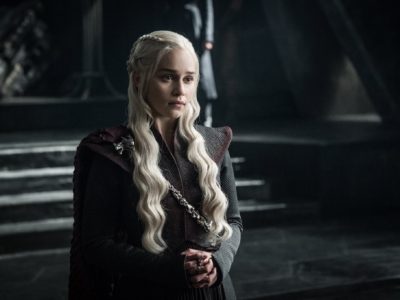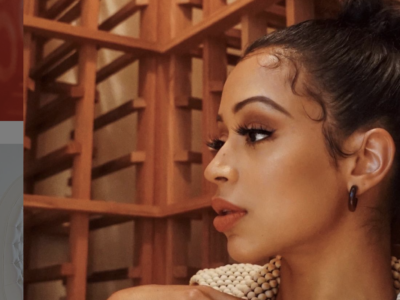Picture this: it’s the first day of summer break as finals season comes to its highly anticipated end. You can finally dust off the books that patiently waited for you on the shelf. After setting up the perfect ambiance: a lounge chair in the yard (to smell the freshly cut grass), a chill playlist echoing softly to accompany the novel and homemade lemonade so cold the condensation forms tiny droplets outside the glass—reading hour finally can commence. You open up to the crisp first page and, from the sentences you read, you already know it’s a page-turner. The birds sing and the hours pass; you barely notice the day continue. The characters became your friends; their faces and style live in your mind as if you met them in real life. By the time sun decides to wish the world farewell, you finished the novel. How could you possibly put it down with all of those twists and turns?
The novel’s magnificence leaves you wanting more. Now what?

I’m here to tell you that with a page-turning novel often comes an incredible television or movie adaption. The common misconception with adaptations of these novels is the lack of accuracy. While most films or shows lack similar elements to the novel, some do a great job staying true to the text. These television shows provide such good quality storytelling that you may even decide to watch before you read.
“Television and movie adaptations are always fun to watch even when you haven’t read the book. Sometimes, you just don’t have time to read first. However, reading the book before experiencing an adaptation makes it more fun. You get to sit there and watch the show and point out everything that’s different or what they kept the same. The little details they put into the production mean that much more when you know the context that they stem from,” St. John’s University junior Samantha Haynia said.
From the perspective of any avid reader, always read the book first.
“For example, the Looking for Alaska television adaptation that Hulu created was a fantastic rendition of the novel by John Green. They kept many of the details the same and even kept true to a good portion of the dialogue. Having read the book first, I enjoyed watching the show more than I think I would have without reading because I had my own images of the story and watched them come to life,” Haynia said.
Interested? Follow along for the five best television adaptations to watch (after you read the books, of course)!
1. Game of Thrones

Game of Thrones, arguably the best fantasy series of all time, consists of seven novels written by the incomparable George R. R. Martin. The release of the first novel, A Song of Ice and Fire, took place in 1996 and since then left the world in a universal state of awe. Most viewers of the show that I encountered did not read the books. While the first two seasons accurately mirror the first two novels, by season six, the show takes its own turn. So many of the viewers expressed disappointment in the final season of the show and its end. If this applies to you, give the books a shot. You may read a version you didn’t get to see on the big screen.
“Book one is very similar to season one,” Fordham University senior Anna Basic said. “It was cool to read from the perspective of certain characters. You get to know the characters on a more personal level from the start of the books. I haven’t had the chance to read past book one, but I did hear that they eventually deviate from the show.”
The novels and the show encapsulate broken kingdoms grasping at straws to retain stability amidst ever-growing crises. Betrayal and secrets lurk at every corner, all in hopes to attain the envied Iron Throne. The story includes elements that appeal to everyone, between feminist icons, politics, war, journeys and sex (lots of it). Oh, and dragons! If these features take to your liking, this might be the beginning of your Game of Thrones summer! Be warned, dear reader, “winter is coming!”
2. Sharp Objects

For selfish purposes, I added Gillian Flynn’s masterpiece to this list. For a long time, Sharp Objects held the title of my favorite book and television show (since then, I learned assigning titles of favoritism gets far too difficult, so many amazing works exist out there).
Flynn’s novel introduces readers to Camille Preaker, an alcoholic journalist longing to break free from her traumatic childhood past. Trigger warning— the novel describes some pretty graphic situations, from self-harm to brutal murder. Calling all psychological thriller junkies, add this novel to your list.
While the HBO adaptation of the show doesn’t match the novel word for word, the accuracy cannot be ignored. Amy Adams gave an outstanding performance as Camille Preaker, along with the chilling enactments from her co-stars Patricia Clarkson, Eliza Scanlen, Henry Czerny and many more! The television show leaves viewers wanting more, while its predecessor, the novel, finishes with an unsettling end.
3. The Handmaid’s Tale

Margaret Atwood’s The Handmaid’s Tale, published in 1985, stunned readers. The dystopian novel earned a spot on the banned books list for vulgarity and female degradation. Atwood created a society in reaction to a fertility crisis booming in the United States. The crisis gave rise to a fundamentalist Christian-run government, where men ultimately hold all power. Bruce Miller, the showrunner of the Hulu series, noted that his goal remained to stay as faithful to the novel as he possibly could.
According to the Insider interview, Offred, played by Elizabeth Moss, attributes more rebellious qualities in the show than in the book. In the book, Offred adapts passivity to survive her position as a handmaid in Gilead (once known as the United States). The Gilead in the show makes up of more diversity, while in Atwood’s novel, Gilead very much reflected Nazism in terms of race.
Finally, the show provides more insight into other characters while the novel remains centered on Offred. Don’t let these slight differences deter you from taking on the book and the Hulu series!
4. Little Fires Everywhere

Celest Ng’s Little Fires Everywhere depicts two contrasting families living in Shaker Heights, Ohio. For the most part, the show, starring the renowned Kerry Washington and Reese Witherspoon, stays true to the novel. Both the novel and show begin with the same circumstance: a fire at the Richardson household. The show strays from the book in who sets the fire (a secret you can only learn by reading and watching).
Another significant difference the show sets in place, all approved by Ng, lies in the issues of race and sexuality. Ng wrote Mia Warren as a white character, but the showrunners decided to depict Mia and her daughter Pearl as black characters. Characters Mia Warren, played by Washington, and Izzy Richardson, performed by Megan Stott, bubble conflicts about the struggles of sexual identity. In the show, Izzy experiences ostracization by her classmates and mother due to her sexuality. The book, however, doesn’t dive deep into these issues.
The novel and Hulu adaptation, similar and different in a few ways, provide the optimal entertainment experience. Set the stage with Celeste Ng’s novel, and then make your way to the moving and heart-wrenching Hulu adaptation; you won’t regret it!
5. Good Omens

The research I uncovered placed Neil Gaiman, popularly known for his novel Coraline, and Terry Pratchett’s Good Omens next on my summer read and watch list. Gaiman and Pratchett’s novel tells the story of the angel Aziraphale and the demon Crowley who dwell on Earth from the time of Adam and Eve’s creation and, over time, become accustomed to living alongside humanity. Upon the birth of the Antichrist, the end of the world plagues humanity. The angel can’t accept the end just yet, so he manages to bring his demon friend along on the journey in his attempts to post-pone the apocalypse.
“Good Omens produced two of the wittiest fictional characters I have ever read,” St. John’s University senior Jennifer Tenuto said. “To see it accurately translated onto the big screen was not something I expected when I decided to watch. By far, the show is one of the greatest book-to-television adaptations that I have seen, especially since author Neil Gaiman had a role in the show’s production. Who knew a story about the coming of the end of days could be so fun?”
The show offers deeper character backstories than the book. For example, the angel Gabriel’s personality develops more in the show, displaying him as the angel in charge. His personality captivates audiences; he’s actually quite funny. The differences between the show and book remain limited, making this the perfect read-then-watch opportunity.



















